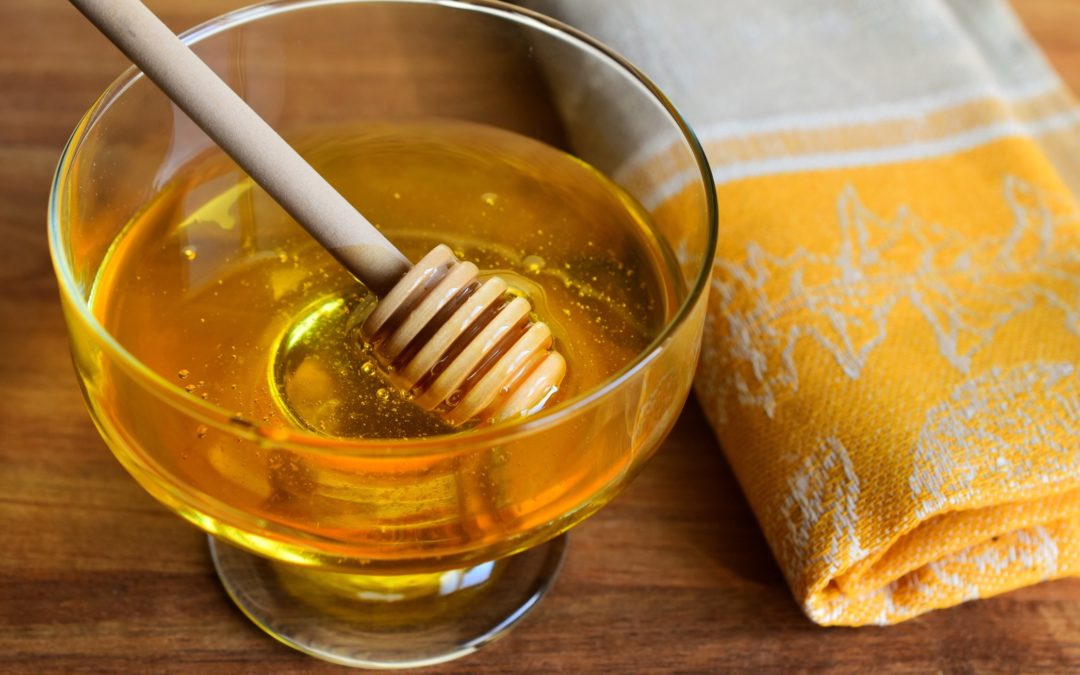The medical cannabis world has noticed cannabis-infused honey, but this edible is different from most infused products. For years, people have been infusing cannabis into honey. But the new kinds of cannabis honey are produced by an unexpected source – the bees themselves. The discovery happened by accident – as growers increased cannabis crops to meet the growing demand for both medical and recreational marijuana, they noticed the once-threatened bee population getting their nutrition from the plant. The result is bee-made cannabis honey that is produced with cannabis already present, no intervention from man required.
This is exciting to many in the medical cannabis community. The cannabis honey made by bees has a far more rapid onset (5 to 10 minutes versus 30 to 90 minutes) and as much as100 times greater efficacy than man-made cannabis honey. These statistics indicate that the honey’s increased bio-availability is due to something inherent in the bee’s process.
Cannabis Pollination and Cultivation
For pollination to occur in cannabis plants, pollen must make it from the flowers of male plants to female plants’ flowers. Like most plants, cannabis relies on two cultivation methods for this pollination to occur – insect pollination or wind pollination.
Insect pollination: insects are attracted to nectar around the pollen, brightly colored flowers, or floral aromas. As insects feed on the nectar, pollen attaches to their bodies and is transported as they travel to the next flower, searching for more nectar.
Wind pollination: wind carries airborne pollen from plant to plant; bees are not required for the plants to reproduce. Wind pollinated crops have evolved to rely on wind and not insects, so they typically do not produce nectar or flowers.
The cannabis plant is wind-pollinated, therefore has not evolved to make nectar, the primary ingredient in honey. So the question remains, how is cannabis getting into the bee-made honey?
Bees and Cannabis Plants
Researchers were intrigued to learn of the bees’ attraction to hemp plants and thus began to study the bee’s behavior around the crop. They discovered that bees are attracted to tall, male plants that flower later in the season than other types of crops. The lack of interest in female plants has an easy explanation – only male plants have pollen.
Because cannabis flowers late in the growing season, the male cannabis plant provides pollen when there are no other plants available for the bees to consume. Therefore, the bees seem to use cannabis as a type of “last resort” food, which they seek out only after other nectar-laden crops are no longer available.
Pollen Versus Nectar
Pollen is plant sperm, while nectar is a sugar-filled liquid produced by plants to attract pollinators. Pollen is located in proximity to the nectar. When insects feed on nectar, they pick up pollen inadvertently, then transporting it to female flowers. Cannabis pollen is rich in cannabinoids and flavonoids.
Nectar contains sugars, vitamins, salts, and oils, which is their primary source of energy. When ingested together, they provide a high energy food source for pollinators.
The Pollination Process
Bees collect pollen from male flowers, then mix it with nectar or saliva. The mixture is then stored in little baskets attached to their hind legs, called pollen loads. Pollen loads are transported back to the hive and unpacked by house bees. Therefore, cannabinoids in the pollen are processed by adding enzymes from the saliva and allowing the mixture to ferment.
Bee bread also contains:
* proteins
* essential amino acids
*vitamins C, B1, B2, E, H (biotin), K, P (rutin)
* nicotinic acid
* folic acid
* pantothenic acid
* pigments, carotenoids, and anthocyanins
* saccharase, amylase, and phosphatase enzymes
* flavonoids
* minerals and spore elements such as iron, calcium, magnesium, phosphorus, potassium, copper, zinc, and selenium
Conclusion
Bees are utilizing the ever-increasing supply of hemp plants as a necessary and available food source. The honey produced from these bees is infused with bio-available nutrients and cannabinoids that can influence human health and well-being. While research is still to be done, this symbiotic relationship offers exciting prospects for both bee populations and human medical treatments.
Dr. Daniel P. Stein is a board-certified physician located in Sarasota, Fl. He specializes in medical cannabis treatment as an alternative or supplement to traditional pharmaceutical drugs.

